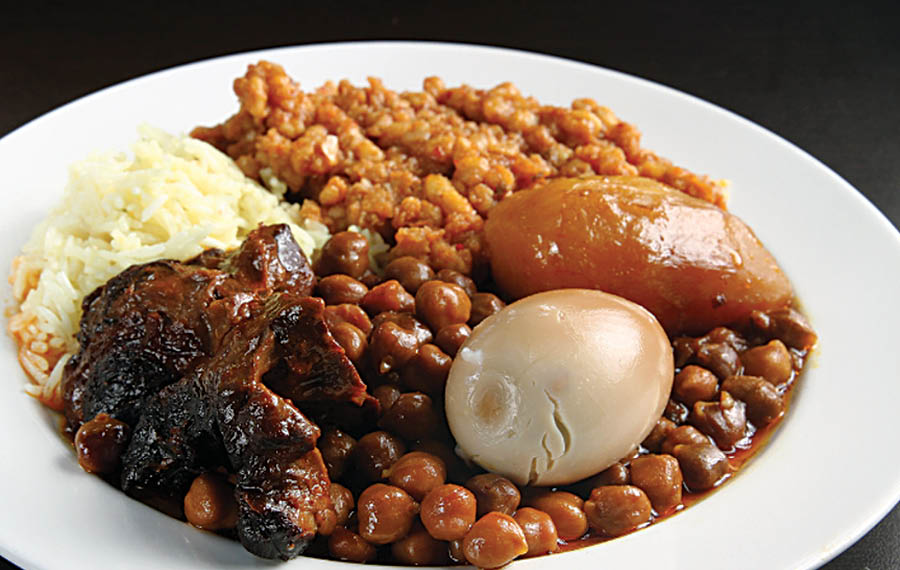
Though cholent is known as one of the most famous slow-cooked Shabbat recipes, many non-Ashkenazi communities have had their own overnight-cooked Shabbat staples for centuries. For North African Jews, particularly from Morocco, Tunisia, and Algeria, that dish is called “dafina.” This hearty dish is famous throughout North Africa and Israel, and is still being prepared to this day by Jews with North African backgrounds in countries such as the United States, Canada, France, and Israel.
The history behind this dish began in observance of the prohibition to cook on Shabbat. Jews around the world took to preparing certain foods overnight and serving them on Shabbat day, whether at synagogue or at home. Dafina is no exception. Traditionally, it was made in a communal oven (often at the local bakery or a nearby synagogue). Most families brought their pots to the communal oven so that the dafina could cook overnight, then took their pots home Shabbat morning.
Dafina is made with a variety of vibrant spices like allspice, cinnamon, and cumin. It also includes beef (as well as beef bones), potatoes, eggs, wheat berries, sweet potatoes, dates, honey, and chickpeas. Most Sephardic French Jews whose families hail from North Africa have fond memories of the distinct smell and hearty taste of dafina on Shabbat mornings or afternoons. Some elements, including the wheat berries, are separated from others in the pot and placed in heat-safe bags. The tradition dates back to medieval Spain and a process of cooking and layering foods separately called afadina. Dafina is also known as hamim, chamim, la daf, or skhina. In Judeo-Arabic, “ad dafina” means “covered.”
After the Spanish expulsion of Jews in 1492, many Jews resettled in Morocco (and some in the Ottoman Empire). Today, recipes for this hearty Shabbat stew, which now is often made in a slow-cooker, can be found in many online sources, complete with historical background and charming family stories.
